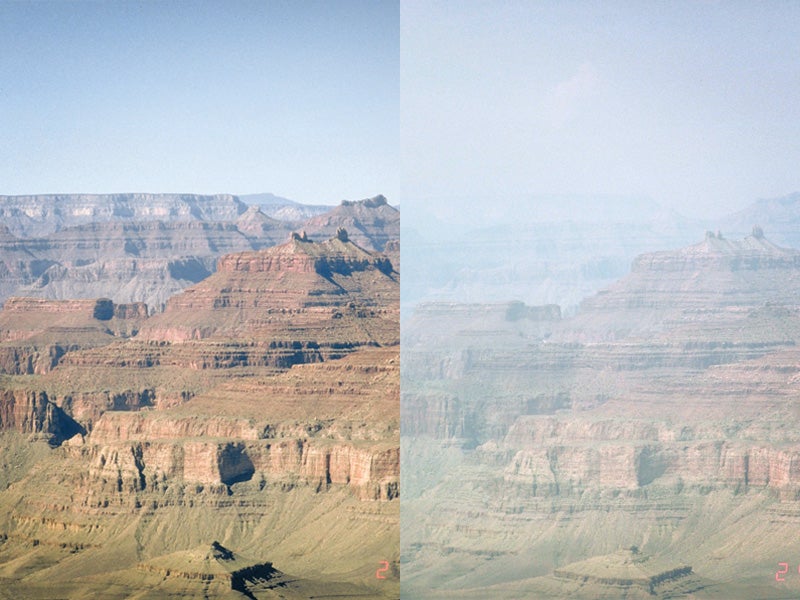Clearing the Air in Our National Parks
Watch Earthjustice set the record straight during upcoming oral arguments about the Navajo Generating Station’s dirty emissions and its outsized impact on our national treasures, including the Grand Canyon.

This page was published 9 years ago. Find the latest on Earthjustice’s work.
I was thinking about the upcoming oral arguments scheduled for November 18 in the Navajo Generating Station coal plant case when I saw a news report that EPA Administrator Gina McCarthy bragged about how the agency had cleaned up haze pollution in Shenandoah National Park. It struck me as ironic that the EPA should claim this particular mission-accomplished status a scant month before court arguments on the Navajo Generating Station.
In the Navajo station case, the EPA is fighting hard to defend dirty air. The agency has given the outdated, dirty coal plant a pass for almost 30 years, failing to enforce clean air requirements and allowing the plant to foul the air in Grand Canyon National Park and 11 other national parks and wilderness areas. The Navajo Generating Station emits huge amounts of pollutants and, according to the agency’s own data, dirties the air in these national parks for as much as a third of every year.
John Shadegg—a former congressional representative from Arizona—offers his own colorful interpretation of the facts: He claims that “environmentalists” like me and one of my clients are responsible for the presence of this dirty hulk on our landscape and that he finds it ironic that we now want it “shut down.” (“Environmentalists Sue Over Problem They Helped Create,” The Arizona Republic, October 10, 2016) Let’s clear the air a bit and review the real story.
First, this lawsuit is about cleaning up the Navajo Generating Station in compliance with the law, not shutting it down. The Clean Air Act requires the EPA to enforce pollution controls at the Navajo Generating Station to achieve the greatest improvement in air quality in national parks and wilderness areas. A side benefit of that cleanup will be significantly improved public health in areas surrounding the site, particularly for people living closest to the plant in the city of Page and on Navajo and Hopi reservations.
The lawsuit seeks to require the EPA and the Navajo Generating Station to simply follow the cleanup requirements in the law. Nowhere in this lawsuit is there an argument for the “shut-down” of the plant. Experts even provided a report showing that cleaning up the plant with the required technology would be cheaper than shutting it down and buying power on the open market. In fact, the government and industry—co-owners of the Navajo Generating Station—are arguing for the shut-down option. They appear to want to keep all their options open and to avoid cleanup at any cost.
Second, concerning the claim that environmentalists wanted this plant, Shadegg’s story obscures much of the actual facts and history. Confronted with the Bureau of Reclamation pushing hard to dam the Grand Canyon back in the 1960s—which would have destroyed that majestic landscape—citizens were instead offered a “deal” involving the dirty coal plant and coal mine to keep our national park intact. It only took a year for area tribal members and many other citizens to see just how bad that deal was and to start working for change. The real story is that citizens and the environment always seem to get the short end of the stick when the fossil fuel industry looks to strike a deal.
So let’s all get our facts and history straight. The EPA needs to match its actions to its recent bragging and require this dirty coal plant to follow the law by cleaning up air pollution now, not 30 years from now. EPA, don’t feed us half-truths about the plant’s dirty history to justify continued air pollution on some of our most spectacular national lands.
Tune in to hear oral arguments before the Ninth Circuit Court of Appeals in San Francisco on November 18 at 9 a.m. A livestream can be found on the court’s website.